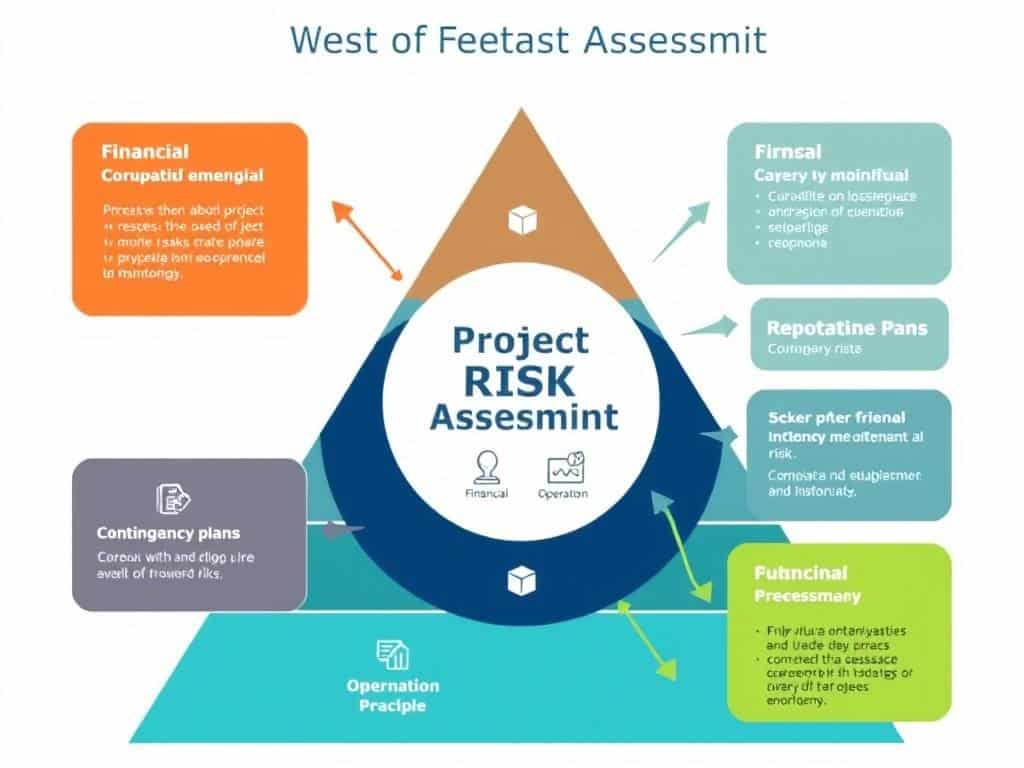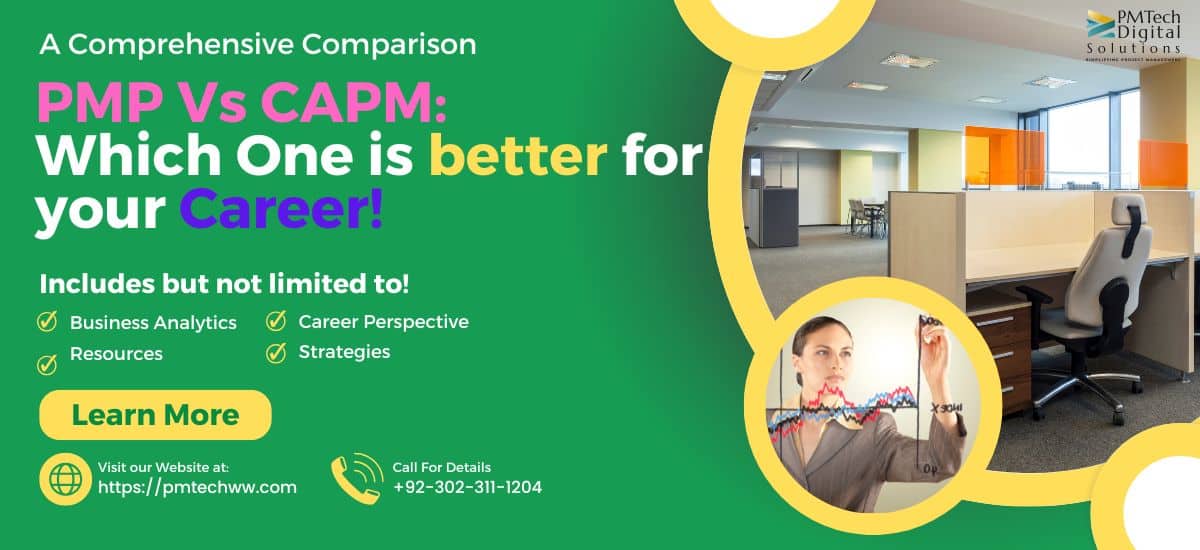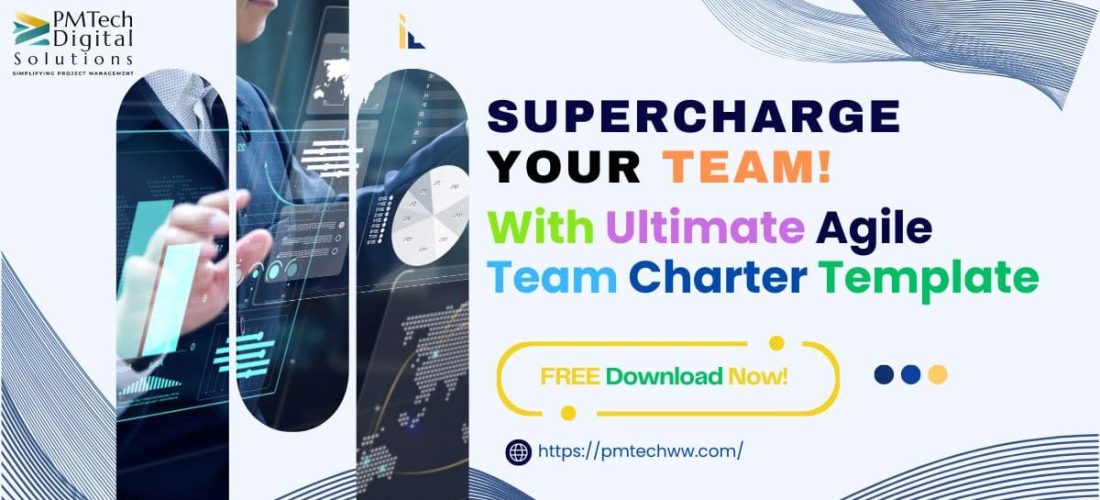Struggling to justify your project’s value? Unsure how to communicate potential ROI and secure resources? A compelling and effective business case template is your solution. It’s a powerful tool for project justification.
A well-structured business case articulates objectives, risks, benefits, and costs. Financial modeling and cost-benefit analysis demonstrate your project’s tangible value. This approach helps you show the organization’s potential gains.
Creating an effective business case goes beyond number crunching. It requires strategic stakeholder management and comprehensive risk assessment. Meticulous project planning is also crucial. Gathering input from team members ensures your case addresses all critical aspects.
This guide will walk you through writing an effective business case using a template. We’ll cover defining objectives, conducting financial analysis, and assessing risks. You’ll learn to outline implementation plans and optimize your project’s ROI.
Key Takeaways
- A business case template streamlines the process of justifying project value and securing resources
- Effective business cases involve financial modeling, cost-benefit analysis, and project planning
- Stakeholder management is crucial for gaining support and approval for your project
- Thorough risk assessment and mitigation strategies enhance the credibility of your business case
- Clear communication and storytelling help convey the value and potential ROI of your initiative
Understanding the Basics of a Business Case
A well-crafted business case is crucial for new ventures or significant initiatives. It outlines business needs and benefits of pursuing an opportunity. This roadmap guides decision-making and aligns efforts with organizational goals.

What is a Business Case?
A business case justifies a proposed project or initiative. It presents arguments for undertaking the project, highlighting potential benefits, costs, risks, and organizational impact. This document provides decision-makers with information to determine a project’s worth.
Studies show 70% of long-lasting businesses follow strategic plans. This highlights the importance of a well-defined success roadmap. Without a solid case, projects may misalign with objectives and face uncertainties.
SWOT analysis, market research, and product validation can assess opportunities in a business case. Consider project purpose, alignment with goals, and success metrics when creating one.
A comprehensive case should include project rationale, problem-solving aspects, and strategic alignment. This guide offers insights on communicating objectives and aligning them with business goals.
Difference between a Business Case and Business Plan
Business cases and plans serve different purposes. A plan outlines strategy for a new venture, mapping mission, vision, and approach. It focuses on high-level goals for establishing and growing a business.
A case proposes investments or initiatives within existing organizations. It analyzes potential benefits, costs, and risks associated with the project. Cases focus on outcomes and objectives, while project plans emphasize outputs and deliverables.
| Business Case | Business Plan |
|---|---|
| Proposes a significant investment or initiative within an existing organization | Outlines a strategy for a new business venture |
| Focuses on outcomes and objectives | Focuses on high-level goals and strategies for establishing and growing a new business |
| Requires detailed analysis of benefits, costs, and risks | Maps out the mission, vision, and overall approach |
Executive summaries are crucial for both business cases and plans. They provide quick project overviews, including purpose, benefits, costs, and timelines. Project charters concisely outline objectives, scope, and key stakeholders.
A well-defined project scope can improve resource allocation and project planning, leading to long-term project success.
Identifying the Need for a Business Case
Business cases aren’t always necessary. They’re crucial for projects requiring significant resources and impacting organizational goals. Smaller initiatives may only need a project charter to communicate purpose and gain support.

Even without a full business case, we must address key project questions. These include purpose, goal alignment, success metrics, team composition, and timeline. Addressing these aspects demonstrates our understanding of the project’s importance.
“A business case is more than a document; it’s a decision-making tool that helps organizations allocate resources effectively and maximize project success.”
Consider these factors when determining the need for a business case:
- Project scope and complexity
- Resource requirements (financial, human, and technological)
- Potential impact on organizational goals and objectives
- Level of risk and uncertainty associated with the project
- Stakeholder expectations and involvement
Carefully evaluating these factors helps decide if a business case is necessary. A well-crafted business case increases project success chances. It ensures alignment with organizational priorities and secures stakeholder support.
Gathering Stakeholder Input and Support
Involving key team members and stakeholders is crucial when crafting a business case. Their input ensures a comprehensive and well-informed proposal aligned with organizational goals. Let’s explore effective ways to identify and engage stakeholders.
Identifying Key Stakeholders
The initial step is pinpointing key players impacted by or influencing the project. These may include project sponsors, executive stakeholders, department heads, subject matter experts, and end-users. Careful consideration ensures all relevant perspectives are accounted for.

Engaging Stakeholders Early in the Process
Early stakeholder engagement is vital in business case development. This approach gathers valuable insights, builds support, identifies potential roadblocks, and ensures alignment with organizational priorities.
A “soft launch” can be effective. Share an outline with the project sponsor or executive stakeholder. This confirms the initiative’s worth before investing significant resources into full development.
“Engaging with stakeholders, gathering their insights, and building support before writing the final business case increases the chances of getting the green light.”
Regularly check in with key stakeholders as you build different sections. Involve the IT team in tooling and timeline decisions. Have the finance team review budget and risk management sections.
| Stakeholder Group | Key Contributions |
|---|---|
| IT Team | Tooling and timeline decisions |
| Finance Team | Budget and risk management review |
| Subject Matter Experts | Technical insights and feasibility assessment |
| End-Users | User requirements and usability feedback |
Actively seeking and incorporating stakeholder feedback creates a robust and persuasive argument for your project. This approach strengthens your business case and increases its chances of approval.
Defining the Problem and Proposed Solution
Crafting a compelling business case requires articulating the problem and presenting a viable solution. By defining the issue’s impact, we can communicate the project’s urgency to key stakeholders. This approach aligns the proposal with organizational objectives.
Clearly Articulating the Business Problem
Presenting the business problem demands conciseness and minimal industry jargon. Summarize the issue in 3-5 sentences, focusing on core challenges and their organizational effects. Incorporate up to three key statistics to provide context and credibility.
The 5W2H method offers an effective framework for structuring a comprehensive problem statement. It addresses the what, why, where, who, when, how, and how much of the issue.
- What: The specific issue or challenge faced by the organization
- Why: The reasons behind the problem and its significance
- Where: The areas or departments affected by the issue
- Who: The stakeholders impacted by the problem
- When: The timeline of the problem and its potential escalation
- How: The manner in which the issue affects the organization
- How much: The quantifiable impact of the problem on the company
Presenting the Proposed Solution
When proposing a solution, maintain clarity and focus. Limit the description to two sentences, highlighting key benefits and problem-solving aspects. Consider the audience’s knowledge and expectations for effective communication.
According to a recent study, a well-crafted problem analysis that incorporates key statistics can increase the approval rate for large-scale initiatives by up to 30%.
Aligning Project Goals with Organizational Objectives
A strong business case demonstrates how the project aligns with organizational objectives. Connecting project goals to the company’s vision emphasizes its strategic importance. This approach highlights the potential impact on long-term success.
| Component | Description |
|---|---|
| Problem Description | A clear and concise outline of the issue faced by the organization |
| Impacted Parties | Identification of the stakeholders affected by the problem |
| Effects of the Problem | The quantifiable and qualitative consequences of the issue |
| Proposed Solution | A brief description of the recommended approach to address the problem |
Effectively defining the problem and presenting a focused solution creates a compelling argument. This approach increases the likelihood of securing necessary resources and support. Aligning project goals with organizational objectives strengthens the overall proposal.
Conducting a Thorough Financial Analysis
A comprehensive financial analysis is crucial for determining a project’s viability and potential return on investment (ROI). Collaboration with the finance department provides essential data and insights for informed decision-making about financial feasibility.

Estimating Project Costs
The initial step involves estimating total project costs by breaking down various expenses. This includes new tools, competitive intelligence resourcing, agency costs, personnel expenses, and professional fees.
A detailed budget is developed by carefully examining each cost driver. This ensures an accurate reflection of the project’s financial requirements.
Projecting Financial Benefits and ROI
After understanding project costs, we project expected financial benefits and calculate potential ROI. Factors considered include increased revenue, cost savings, improved efficiency, and enhanced customer satisfaction.
Quantifying these benefits and comparing them to project costs helps determine the ROI. This assessment is crucial for evaluating the project’s overall financial viability.
According to a recent study by McKinsey & Company, companies that conduct thorough financial analyses and focus on ROI in their business cases are 2.5 times more likely to achieve their desired outcomes.
Analyzing Cash Flow Impact
Considering the project’s impact on cash flow is vital. Significant investments may negatively affect short-term cash flow. However, a well-planned project with high ROI should positively impact long-term cash flow.
| Cash Flow Impact | Short Term | Long Term |
|---|---|---|
| Significant Investment | Negative | – |
| High ROI Project | – | Positive |
A sensitivity analysis summarizes financial projection uncertainties and identifies potential risks. This allows for contingency plan development and informed decision-making based on various possible outcomes.
Collaborating with finance and using financial tools helps conduct a thorough analysis. This supports the business case and aids in making strategic decisions for long-term success.
Assessing Risks and Mitigation Strategies
Effective business cases require thorough risk assessment and robust mitigation strategies. Identifying and prioritizing risks based on likelihood and impact allows for proactive management of uncertainties. This approach minimizes negative effects on project success.

Identifying Potential Risks
Risk assessment begins with identifying all possible risks affecting project elements. These include cost, benefits, schedule, team, technology, scope, and performance. Transparency and realism are crucial when presenting risks to stakeholders.
Rank identified risks according to their likelihood and potential impact. This practice demonstrates foresight and capability to manage challenges effectively.
Studies show 73% of risk mitigation plans fail to consider all potential risks. Prioritizing risks based on severity and likelihood can increase project efficiency by 40%.
Developing Risk Mitigation Plans
After identifying and prioritizing risks, develop mitigation plans. These plans aim to eliminate, manage, or minimize negative impacts on the project. Well-structured risk mitigation plans increase project success rates significantly.
Projects with risk mitigation plans are 30% more likely to finish on time and within budget. Consider five main risk mitigation strategies:
- Acceptance: Setting project deadlines to manage risks
- Avoidance: Adjusting project requirements to avoid threats
- Control: Employing tools like time-tracking to mitigate risks
- Monitoring: Holding periodic updates to assess risks
- Transference: Outsourcing tasks to external providers to reduce risk exposure
Effective risk response strategies can decrease identified risk impacts by up to 60%. Clear communication plans result in a 25% decrease in mismanaged risks.
Include these components when developing a risk mitigation plan:
| Component | Description |
|---|---|
| List of individual risks | Identify and list all potential risks |
| Short description of each risk | Provide a brief overview of each identified risk |
| Risk analysis and rating | Assess the likelihood and impact of each risk |
| Root cause analysis | Determine the underlying causes of each risk |
| Plan of action | Outline steps to mitigate or manage each risk |
| Designated person/team | Assign responsibility for managing each risk |
| Timeline for the action plan | Establish a schedule for implementing risk mitigation measures |
| Estimated cost(s) for mitigating the risk | Budget for resources needed to address each risk |
Incorporating risk mitigation strategies into business cases significantly enhances project success likelihood. Projects lacking well-defined contingency plans are 50% more likely to exceed budgets. Investing in risk assessment and mitigation is crucial.
Outlining the Implementation Plan
A comprehensive implementation plan is crucial for our solution’s success. It should outline key milestones, timeline, dependencies, and required resources. This approach helps manage the project effectively and optimize our return on investment.
Project milestones mark the completion of major deliverables or phases. Our milestones may include:
- Completing the initial design phase
- Obtaining necessary approvals and funding
- Finalizing vendor contracts
- Launching the pilot program
- Rolling out the full-scale implementation
A project timeline outlines the expected duration of each phase. It helps track progress, identify potential delays, and maintain schedule adherence. Effective teamwork and collaboration are vital for meeting timeline goals.
Identifying project dependencies is crucial. These are tasks relying on the completion of others before they can begin. Understanding dependencies allows for efficient planning and avoids unnecessary delays.
Successful implementation requires various resources. These include personnel, technology, equipment, and funding. Let’s examine the estimated costs for these resources:
| Resource Category | Estimated Cost |
|---|---|
| Personnel | $150,000 |
| Technology and Equipment | $75,000 |
| External Consulting | $50,000 |
| Training and Change Management | $25,000 |
| Total Estimated Cost | $300,000 |
Investing in these resources ensures a smooth implementation process. It maximizes the benefits of our proposed solution. These benefits include:
- Reducing production costs by 20%, resulting in a 5% increase in profits for each Super Widget sold
- Improving efficiency and productivity across the organization
- Enhancing our competitive advantage in the market
“Teamwork is the ability to work together toward a common vision. The ability to direct individual accomplishments toward organizational objectives. It is the fuel that allows common people to attain uncommon results.”
A well-outlined implementation plan is key to success. It defines project milestones, establishes realistic timelines, and identifies dependencies. Proper resource allocation ensures optimal ROI and project success.
Establishing Governance and Monitoring Mechanisms
A robust project governance structure and effective monitoring mechanisms are crucial for success. Project governance provides a framework for decision-making, accountability, and oversight. These practices optimize project performance, meet deadlines, and achieve desired outcomes.
Defining a clear structure is the first step in establishing project governance. This structure outlines roles, responsibilities, and authority hierarchy. It typically includes a steering committee, project sponsor, manager, and team members.
The steering committee, comprising senior executives and key stakeholders, provides strategic direction. They make high-level decisions and ensure alignment with organizational goals. The project sponsor champions the project at the highest level.
The project manager handles day-to-day management. They keep the project on track, within budget, and meeting objectives. Effective governance also requires monitoring and reporting mechanisms to track progress and maintain accountability.
These mechanisms may include:
- Regular status reporting to keep stakeholders informed of project progress, risks, and issues
- Utilization of project management software to track tasks, milestones, and resource allocation
- Conducting regular project status meetings to review progress, discuss challenges, and make informed decisions
- Implementing performance metrics to measure project success and identify areas for improvement
According to a recent study, organizations with well-defined project governance structures and monitoring mechanisms are 47% more likely to deliver projects on time and within budget.
A project steering committee and clear roles promote transparency and effective decision-making. Robust monitoring practices ensure alignment with organizational goals. These mechanisms lead to successful project outcomes and optimized ROI throughout the project lifecycle.
Using a Business Case Template to Streamline the Process
A business case template can streamline development and ensure all essential components are included. It saves time and effort while maintaining consistency across different projects and initiatives. This standardized format boosts efficiency and completeness.
Statistics show that 90% of businesses fail due to inadequate research and poor partnerships. About 20% of startups fail in their first year, with another 30% failing in the second. A well-structured template can mitigate these risks and increase success chances.
Benefits of Using a Template
Using a business case template offers several key advantages. It ensures consistent structure and format, making it easier to review and compare projects. The pre-defined structure saves time, allowing focus on content and analysis.
Templates help ensure no critical elements are overlooked. They facilitate clear communication of benefits, costs, risks, and feasibility to decision-makers and stakeholders.
- Standardization: A template ensures that all business cases follow a consistent structure and format, making it easier for stakeholders to review and compare different projects.
- Efficiency: By having a pre-defined structure, we can save time and effort in creating the business case document, allowing us to focus on the content and analysis.
- Completeness: A template helps ensure that no critical elements are overlooked, such as the problem statement, option analysis, financial projections, and risk assessment.
- Communication: A well-structured business case template facilitates clear and effective communication of the project’s benefits, costs, risks, and feasibility to decision-makers and stakeholders.
Key Components of a Business Case Template
A comprehensive business case template includes several crucial sections. These components ensure the document is thorough and addresses all necessary aspects of the project.
| Section | Description |
|---|---|
| Executive Summary | A concise overview of the business case, highlighting the key points and recommendations. |
| Business Problem | A clear definition of the problem or opportunity the project aims to address, aligned with organizational objectives. |
| Option Analysis | An evaluation of different solutions or approaches, including their benefits, costs, and risks. |
| Feasibility | An assessment of the technical, operational, and financial feasibility of the proposed solution. |
| Risks, Issues, and Assumptions | Identification of potential risks, issues, and assumptions associated with the project, along with mitigation strategies. |
| Implementation Approach | An outline of the project plan, including timelines, resources, and deliverables. |
By incorporating these key components into our business case template, we can ensure that our document is comprehensive, persuasive, and aligned with best practices.
Collaborating with experts from relevant areas enhances the quality and effectiveness of the document. Leveraging collective knowledge and experience creates a robust and compelling business case. This approach significantly increases the chances of project success.
Best Practices for Presenting Your Business Case
Effective business case presentations require clear, compelling communication that resonates with your audience. Following these guidelines can help you convey your proposal’s value and gain stakeholder support.
Crafting a Compelling Executive Summary
The executive summary is crucial for your business case presentation. Craft it last to accurately reflect your proposal’s key points. It should grab attention and provide a concise overview of the problem, solution, and benefits.
Decision-makers often have limited time, so ensure your executive summary is clear and compelling. Begin with a strong opening statement and highlight key points using data-driven storytelling.
Keep it concise, ideally no more than two pages. Use simple language that’s easy to understand, even for those unfamiliar with technical details.
- Begin with a strong opening statement that immediately captures the reader’s attention
- Highlight the key points of your business case, including the problem or opportunity, proposed solution, and expected benefits
- Use data-driven storytelling to support your arguments and make your case more compelling
- Keep it concise, ideally no more than one or two pages
- Use clear, simple language that is easy to understand, even for those who may not be familiar with the technical details of your proposal
Focusing on Clear Communication and Storytelling
Clear communication and storytelling are essential when presenting your business case. Use easy-to-understand language and visuals like graphs and charts to illustrate your points effectively.
Start with a brief elevator pitch answering the what, why, and how of your proposal. This sets the stage and ensures your audience grasps key points from the beginning.
Tell a compelling story highlighting the business need, your solution, and expected benefits. Use real-world examples and case studies to make your arguments more relatable and persuasive.
“The art of communication is the language of leadership.” – James Humes
Effective stakeholder communication is crucial for your business case’s success. Clear communication and storytelling ensure your message is understood, increasing the likelihood of gaining support and approval.
Conclusion
An effective business case is crucial for securing approval for major investments and initiatives. Project managers can develop a compelling case by following our outlined steps. These steps optimize ROI and gain stakeholder support.
Key elements include gathering input, strategic planning, and incremental development. Document refinement and persuasive presentation are also essential for business case approval. These components contribute significantly to overall project success.
Using a well-designed template streamlines the process and ensures all key aspects are addressed. Clear communication and storytelling effectively convey the initiative’s value and potential impact. Organizations can make informed decisions with the right approach and tools.
PMtech Digital Solutions offers resources to support this process. Their tools can help drive project success and facilitate informed investment decisions. Leveraging such resources can significantly enhance your business case development.
A well-crafted business case aligns stakeholders and secures resources for project success. Investing time in creating a thorough case positions you to drive positive change. This effort ultimately delivers substantial value to your organization.
FAQ
What is the purpose of a business case?
A business case explains the value a company will gain from a significant investment or initiative. It outlines expected benefits and helps stakeholders decide whether to proceed with the project.
How does a business case differ from a business plan?
A business case proposes a new strategy within an existing company, highlighting needs and benefits. A business plan outlines a new business, detailing strategy, mission, and vision statements.
When should we create a business case?
Build a business case for initiatives requiring significant resources. For smaller projects, consider creating a project charter to pitch the idea to stakeholders.
Who should be involved in writing a business case?
Team members and stakeholders should contribute to relevant sections. The IT team should handle tooling and timeline decisions. The finance team should review budget and risk management sections.
What are the key components of a compelling business case?
A compelling business case should describe the problem and outline the objective. It should estimate costs, expected ROI, and highlight potential risks. The case should also propose a high-level implementation plan.
How can we effectively present our business case to stakeholders?
Start with a quick elevator pitch answering the what, why, and how. Focus on clear communication and telling a compelling story. Emphasize ROI and alignment with organizational goals.
What role does a business case template play in the process?
A business case template streamlines the creation of an effective document. It ensures all key components are included and follows a logical flow. This allows us to focus on crafting a clear, persuasive story.
How can we ensure our business case is aligned with organizational goals?
Clearly articulate how the project advances the company’s vision and aligns with overall strategy. Engage key stakeholders throughout the process to maintain alignment.
What are some best practices for managing project risks in a business case?
Be realistic and transparent when identifying risk areas to gain stakeholder confidence. Rank risks by likelihood and impact. Propose mitigation strategies to manage and minimize them. Collaborate with relevant teams for comprehensive risk assessment.
How can PMtech Digital Solutions support us in creating effective business cases?
PMtech Digital Solutions offers tools and expertise for creating compelling business cases. They provide templates, best practices, and strategic guidance. This helps streamline the process and drive project success.

















187 Responses
Your article helped me a lot, is there any more related content? Thanks! https://accounts.binance.com/ur/register?ref=WTOZ531Y
Introduction
Types of Steroids
Effects and Side Effects
History and Usage
# Contents
## Steroid
Steroids are a class of organic compounds characterized by a specific type of
chemical structure. They are primarily found in animals, plants,
fungi, and some bacteria, where they play diverse roles in biological
processes. Steroids have three interconnected rings, with functional
groups such as hydroxyl or ketone groups attached to the molecule.
Their structure is crucial for their activity, enabling them
to act as hormones, vitamins, or other bioactive compounds.
## Page version status
This page is based on content from Wikipedia and other reliable
sources. It has been reviewed and updated by experts in the field.
For more detailed information, please refer to the original
source materials.
## Nomenclature
The nomenclature of steroids refers to the systematic naming of these compounds.
Steroids are named based on their structural features or biological functions.
For example, “cholesterol” refers to a specific steroid molecule produced in the liver and
used in animal cell membranes. Other examples include “sex hormones,” such as estrogen and testosterone, which are
steroidal molecules involved in reproduction and endocrine regulation.
## Rings and functional groups
Steroids have a unique structure with three interconnected rings.
The core of the steroid framework consists of two cyclohexane rings fused together, forming a bicyclic system.
Functional groups, such as hydroxyl (-OH) or ketone (C=O) groups, are attached
to this framework and play a critical role
in determining the biological activity of the molecule. These functional
groups can influence steroid behavior, such as their affinity
for specific receptors or their solubility in different environments.
## Naming convention
The naming convention for steroids follows specific rules
that help differentiate between the various types of steroidal molecules.
The name often includes a prefix derived from the class of compounds (e.g., “sterol” for cholesterol, “keto”
for ketone-containing sterols). Additional suffixes may indicate modifications or functional groups present
on the molecule. This system ensures clarity and precision in communication within scientific
communities.
## Species distribution
Steroids are distributed across a wide range of species.
Their presence is not limited to one type of organism, as they
can be found in both eukaryotes and prokaryotes.
For example:
– **Eukaryotic organisms**: Steroids are abundant in animals, plants, fungi, and single-celled
eukaryotes like protozoa.
– **Prokaryotic organisms**: Sterols, a type of steroid, are found in bacterial cell membranes and
play a role in maintaining membrane integrity.
## Eukaryotic
In eukaryotic organisms, steroids serve various biological functions.
For instance:
– Animals produce a wide variety of steroids, including sex
hormones (e.g., estrogen, testosterone) that regulate reproduction and metabolism.
– Plants synthesize sterols as part of their
cell membranes, contributing to the strength and structure of these cellular structures.
– Fungi also produce sterols, such as ergosterol, which is essential for the integrity
of fungal cell membranes.
## Prokaryotic
In prokaryotic organisms, sterols are a key component of
bacterial cell membranes. These sterols help maintain membrane fluidity and flexibility, ensuring that the cell can function under various environmental conditions.
While sterols are common in bacteria and archaea, they are not
typically found in other types of prokaryotes, such as viruses.
## Fungal
Fungi produce a variety of sterols, including ergosterol, which is a fundamental
component of fungal cell membranes. Ergosterol’s structure differs slightly from cholesterol, the primary sterol in animals, but it serves similar functions in maintaining membrane integrity and facilitating the transport of ions and nutrients across the membrane.
## Plant
In plants, sterols are essential for the structural integrity of
cellular membranes. Unlike animals, plants do not synthesize cholesterol but instead produce a related molecule called
phytosterol. Phytosterols share some structural similarities with animal sterols but have unique features that
make them suited to plant biology. These compounds contribute to membrane stability and help regulate growth and development in plants.
## Animal
Animals are perhaps the most complex users of steroids, producing a vast array of
these molecules for various purposes. For example:
– **Sex hormones**: Steroids such as testosterone
(male) and estrogen (female) play critical roles in reproduction and
sexual differentiation.
– **Adrenal steroids**: The adrenal glands produce corticosteroids,
which are involved in stress response and immune
function.
– **Vitamin D**: A steroid molecule derived from cholesterol that is
essential for bone health and calcium absorption.
– **Other sterols**: Cholesterol itself is a vital
component of animal cell membranes and precursor to various hormones and other bioactive compounds.
## Types
Steroids can be categorized based on their function or structure:
– **By function**: Sex steroids (e.g., estrogen, testosterone), adrenal steroids (e.g., cortisol), vitamin D derivatives,
and sterols like cholesterol.
– **By structure**: Intact ring systems, cleaved rings, contracted rings, or expanded
rings.
## Rings and functional groups
The number and arrangement of rings in the steroid framework influence its biological activity.
For example:
– **Intact ring system**: Steroids with all three
rings intact often retain their basic structural features, allowing them to
interact with specific receptors and perform normal cellular functions.
– **Cleaved rings**: Modified steroids where one or
more rings have been broken or altered can result in compounds with different properties.
These derivatives may be more effective at targeting specific cellular pathways or receptors.
– **Contracted rings**: Steroids with one ring contracted into a smaller, often five-membered structure are common in certain hormones and signaling molecules.
– **Expanded rings**: Some steroid derivatives have additional carbons added to the ring system, altering their shape and function.
## Biological significance
Steroids are biologically significant compounds with diverse
roles in organisms. They serve as signaling molecules, hormone precursors,
and structural components of cell membranes. For example:
– **Signaling**: Steroids can act as hormones, transmitting signals within and between cells to regulate gene expression and
cellular activity.
– **Vitamin D**: A steroid derivative that is essential for bone health and calcium absorption.
– **Cholesterol**: A major component of animal cell membranes, which also serves as a precursor for sex
hormones and other steroidal molecules.
## Biosynthesis and metabolism
The biosynthesis of steroids involves complex biochemical pathways that convert simple precursors into highly structured molecules.
The two primary pathways for steroid synthesis are the Mevalonate pathway (also known as the cholesterol biosynthesis pathway) and the
alternative pathways, such as the reverse transport of sterols in cells.
### Mevalonate pathway
The Mevalonate pathway is a series of enzymatic reactions that convert acetyl-CoA into mevalonic acid,
which serves as a precursor for the synthesis of cholesterol and other steroids.
This pathway is active in most animals and
plays a critical role in maintaining cellular health
and homeostasis.
### Steroidogenesis
Steroidogenesis refers to the process by which sterols are synthesized and modified into biologically active molecules.
For example, cholesterol can be converted into
vitamin D in sunlight, or transformed into sex hormones like estrogen and testosterone.
This process is tightly regulated by the body to ensure that steroid levels remain within a healthy range.
### Alternative pathways
In addition to the Mevalonate pathway, alternative pathways for steroid biosynthesis exist, particularly in certain tissues and organisms.
These pathways may involve different precursors or unique enzymatic modifications, allowing for the production of specialized sterols tailored
to specific biological needs.
### Catabolism and excretion
Once steroids have fulfilled their biological function, they are broken down by enzymes known as steroid sulfatases and sulfotransferases.
This process, known as catabolism, converts the steroids into inactive metabolites that can be safely excreted from the body.
The excretion of sterols is a critical step in maintaining homeostasis and preventing the buildup of potentially harmful levels of these molecules.
## Isolation, structure determination, and methods of analysis
The isolation and structural determination of steroids are essential for understanding
their biological roles and developing new therapies. Techniques
such as chromatography, mass spectrometry, and nuclear magnetic resonance (NMR) spectroscopy are commonly
used to isolate and analyze steroidal compounds.
These methods allow researchers to identify unknown steroids or study the structure of known molecules in detail.
## Chemical synthesis
The chemical synthesis of steroids involves the use of organic chemistry techniques to construct
these molecules from simpler precursors.
While natural methods dominate in biological contexts,
synthetic approaches have been developed for the purposes of research and drug development.
Synthesis can be challenging due to the complexity
of the steroid framework, but advanced methodologies have made it possible to create sterols with
specific structural modifications.
### Precursors
The synthesis of steroids begins with precursors such
as mevalonic acid or isopentenyl pyrophosphate (IPP),
which are derived from acetyl-CoA. These compounds undergo a series of enzymatic reactions
to produce the steroid nucleus, the core structure of all sterols.
### Semisynthesis
Semisynthesis involves the chemical manipulation of naturally occurring steroids or their derivatives
to create new molecules with desired properties.
This approach is particularly useful for modifying existing sterols to enhance their biological activity or improve their pharmacokinetics.
### Total synthesis
Total synthesis refers to the de novo construction of steroids from non-steroidal precursors,
without relying on natural sources. This method is often used in drug
discovery to create molecules with therapeutic
potential. The challenge lies in replicating the complex
structure and biological activity of naturally occurring sterols.
## Research awards
Over the years, significant research has been conducted into the chemistry, biology, and applications of steroids.
Notable scientists in this field have received awards for their contributions to
understanding steroid metabolism, biosynthesis, and
function. These achievements have led to advancements in fields such as
medicine, nutrition, and pharmacology.
## See also
– **Lipid metabolism**
– **Endocrinology**
– **Biochemistry**
## References
This article is based on publicly available information and does not constitute medical advice.
Always consult a healthcare professional for medical concerns
or before starting any new treatment regimen.
My page – gnc steroids [Roberto]
Thanks for sharing. I read many of your blog posts, cool, your blog is very good.
70918248
References:
best place to buy anabolic steroids
70918248
References:
legal steroids for muscle growth
70918248
References:
which is the safest steroid? (Kristen)
70918248
References:
Oral Anabolic Steroids
70918248
References:
bodybuilding steroid stacks
Luckily, Anavar is working very fast and is moving
by way of the system very quickly, therefore the results on the body can be brief
too. It looks like there are many individuals who
appear to seek for details about how lengthy does Anavar stay in your system?
In order to accurately answer this question, is essential to grasp why you’re asking this query.
Your results and unwanted facet effects will differ, and this is often the one way
somebody suspects they’ve been scammed with a faux product.
If your Primo seems to be Masteron, and also you didn’t get it examined earlier than using it?
The results will be similar, however Masteron typically has harsher unwanted effects.
HCG (Human Chorionic Gonadotropin) may also
be employed to stimulate the testes immediately, aiding in testosterone production before
the above agents are used. It’s often administered before Clomid or Nolvadex to kickstart the testicular response.
Masteron Enanthate is usually stacked with other steroids to boost outcomes.
In my journey of studying about Anavar’s results after 2 weeks, I even have come throughout a number
of individual experiences – both optimistic and cautionary.
In this part, I will talk about the varied elements
that may influence Anavar’s outcomes, similar to dosage,
food regimen and diet, coaching regimen, and
particular person elements.
The thigh and buttocks are the most really helpful injection sites,
and you need to rotate your injection muscular tissues to
permit recovery. Avoid injecting Deca-Durabolin into small muscle
tissue and areas with arteries. The injection site ought to be swapped with an alcohol wipe to clean earlier than injecting
to maintain hygiene and prevent infection. For recovery
(PCT), use 0.5mg/day Arimidex for 4 weeks post-last injection.
Start Clomid 2 weeks after your last injection at 100mg/day for days 1-10, then 50mg/day for days 11-20.
Deca is taken into account a low-cost AAS compared to many others, which is handy for us, as it’s one which we often wish to run for
longer than average cycles. All steroids are going to
have customers complaining about some unwanted facet effects.
Anavar excels at giving you significant enhancements in aesthetics
– leanness, hardness, dryness, and, in brief, getting ripped
and shredded. Anavar will assist preserve your efficiency and power capability even on the most restricted of calorie-deficit diets.
Critically, your outcomes are going to include the preservation of your current lean muscle.
Anavar helps forestall you from turning into
catabolic – the place lean muscle is lost as energy.
Anavar, also identified as Oxandrolone, is a potent anabolic steroid
renowned for its ability to enhance athletic efficiency and promote muscle mass.
Anavar is by far the most well-tolerated steroid for females, not like Winstrol.
Oral Winstrol remains to be thought of a comparatively
gentle steroid compared to most others. Nonetheless,
most ladies will find that Anavar is more well-tolerated in terms of
controlling the unwanted side effects. For women who wish to
use Winstrol, the oral kind solely is really helpful,
and doses have to be stored very low to avoid virilization. Anavar is not essentially the most
suppressive steroid, but your pure testosterone manufacturing is
prone to have taken successful. This can cause signs of low testosterone
when your cycle ends, together with loss of muscle and fat acquire.
We usually observe virilization unwanted facet effects steadily occurring and exacerbating over a sustained time frame.
A girl ought to discontinue her cycle if she begins to expertise any undesirable symptoms.
The follow-up cycle to this generally begins with a dose of 20 mg as a substitute of
15 mg and is prolonged up to eight weeks.
It is beneficial to take Anavar in the morning on rest days to ensure that it is fully metabolized by the point you go to bed.
This will help to keep away from any sleep disturbances that will
occur due to the stimulant results of Anavar.
It can also be beneficial to take Anavar with a meal to improve absorption and reduce
the risk of abdomen upset.
While taking Anavar on rest days is important, it is
equally necessary to not neglect your individual restoration.
Adequate food and sleep are essential for recovery, and Anavar
might help with recovery, but it’s not an various alternative to it.
However, some individuals choose to split their doses up and take half in the morning and a half at
evening. Hold in thoughts that everybody’s body is different, so you could not expertise all of those benefits as others do.
It offers you extra energy, and you’ll start to see a distinction in your physique.
The most typical side effects are mild and include things like complications, nausea, and a decreased
urge for food. Some folks see great outcomes with just 20 mg of Anavar per day,
whereas others have to up the dose to 50 mg or even one hundred mg to see
the outcomes they’re in search of.
While Anavar is taken into account to be a gentle steroid, it could still cause unwanted
aspect effects. In addition, it helps you construct
energy and vitality quick and safely, and reduces extra fats.
Due To This Fact, Anvarol is the best alternative for these in search of fast, efficient, and
safe outcomes.
Estrogenic effects are some of the most dreaded unwanted effects for men who use Testosterone Enanthate
because they’ve a really noticeable impact in your appearance.
When water retention and/or gynecomastia usually are not stored underneath control, they can rapidly change a
muscular physique into a puffy, bloated one which makes it very obvious that steroids are getting used.
Excess fluid retention additionally has the extra sinister consequence of increasing blood stress, which could already be brought
on by increased ldl cholesterol. For performance enhancement purposes, customers would
need to incorporate Testosterone Undecanoate in a cycle that’s a minimal of sixteen weeks in size.
Otherwise, this slow-acting testosterone kind will not have enough
time to provide any profit.
This may be started as soon as your cycle ends with dosing according to your preference,
however I normally aim for 1000iu per week (two injections).
Then, you presumably can comply with with a daily SERM PCT
utilizing your choice’s SERM(s). Enclomiphene is my preference these days – it’s a extra recent SERM with fewer unwanted aspect effects.
A normal dosing schedule is 25mg daily for weeks 1-5 and 12.5mg for week 6.
For a start, it has half the androgenic power of testosterone, so in concept, girls should be capable of run EQ with less risk of virilization. Females can get
not solely vital gains while on EQ, however many will
discover a significant enchancment within the quality of nails, hair, and skin as nicely.
References:
what do anabolic steroids do to your body [aloshigoto.jp]
Greetings! I know this is kinda off topic but I was wondering if you knew where I could locate a captcha plugin for my comment form? I’m using the same blog platform as yours and I’m having problems finding one? Thanks a lot!
Thank you for your sharing. I am worried that I lack creative ideas. It is your article that makes me full of hope. Thank you. But, I have a question, can you help me?
70918248
References:
Deca anabolic steroids, Palsyworld.com,
70918248
References:
anabolistic disorder
гарантия при продаже аккаунтов купить аккаунт
продажа аккаунтов купить аккаунт с прокачкой
купить аккаунт с прокачкой аккаунт для рекламы
аккаунт для рекламы маркетплейс аккаунтов
аккаунт для рекламы маркетплейс аккаунтов
продажа аккаунтов соцсетей продать аккаунт
гарантия при продаже аккаунтов маркетплейс аккаунтов соцсетей
Account marketplace Guaranteed Accounts
Account Market Account Acquisition
Account Buying Platform Gaming account marketplace
Buy Pre-made Account Account Trading Platform
I like this web site very much so much great info .
Sell accounts Sell Account
Buy Account Social media account marketplace
Account Trading Secure Account Sales
Account Sale Account Market
Accounts marketplace Account Trading Platform
Accounts marketplace Secure Account Purchasing Platform
Online Account Store Website for Buying Accounts
sell accounts account marketplace
account trading platform marketplace for ready-made accounts
account selling service buy account
purchase ready-made accounts buy and sell accounts
website for selling accounts online account store
account sale account exchange
online account store account acquisition
profitable account sales account trading service
account purchase account exchange service
account marketplace buy and sell accounts
social media account marketplace sell account
secure account sales social media account marketplace
account catalog secure account purchasing platform
website for buying accounts account market
profitable account sales account market
account acquisition account selling service
online account store account buying service
account sale account catalog
account selling service account store
verified accounts for sale buy account
account trading account marketplace
sell account account trading service
buy and sell accounts profitable account sales
account trading platform account trading service
verified accounts for sale sell accounts
website for selling accounts secure account sales
buy accounts account exchange service
sell pre-made account account trading
account catalog accounts market
purchase ready-made accounts https://accounts-marketplace.xyz/
account trading https://buy-best-accounts.org
account store https://social-accounts-marketplaces.live
buy accounts https://accounts-marketplace.live
account buying service social-accounts-marketplace.xyz
buy account https://buy-accounts.space/
ready-made accounts for sale https://buy-accounts-shop.pro
guaranteed accounts https://accounts-marketplace.art
secure account sales account market
sell account https://buy-accounts.live
account market accounts-marketplace.online
account trading platform accounts marketplace
продать аккаунт https://akkaunty-na-prodazhu.pro
маркетплейс аккаунтов маркетплейсов аккаунтов
покупка аккаунтов https://kupit-akkaunt.xyz
покупка аккаунтов akkaunt-magazin.online
продать аккаунт https://akkaunty-market.live
продажа аккаунтов https://kupit-akkaunty-market.xyz
магазин аккаунтов https://akkaunty-optom.live
продажа аккаунтов https://online-akkaunty-magazin.xyz/
маркетплейс аккаунтов https://akkaunty-dlya-prodazhi.pro/
площадка для продажи аккаунтов https://kupit-akkaunt.online/
buy fb ad account buy facebook profiles
buy a facebook ad account https://buy-ad-accounts.click/
fb accounts for sale https://buy-ad-account.top
buying fb accounts buy facebook ads accounts
facebook ads accounts facebook ads account for sale
buy aged fb account https://buy-ads-account.work
facebook ad accounts for sale https://ad-account-for-sale.top
buy fb ad account https://buy-ad-account.click
buy fb account buy facebook accounts cheap
old google ads account for sale buy google adwords account
buy google ads agency account https://buy-ads-accounts.click
fb accounts for sale https://buy-accounts.click
70918248
References:
steroids in medicine; https://wekicash.com/,
buy old google ads account https://ads-account-for-sale.top
buy google ads account https://ads-account-buy.work
adwords account for sale buy-ads-invoice-account.top
buy aged google ads accounts buy google ads agency account
buy google agency account buy aged google ads account
facebook verified business manager for sale https://buy-business-manager.org/
buy google ads verified account https://buy-verified-ads-account.work
buy google adwords accounts https://ads-agency-account-buy.click
70918248
References:
steroids medication
buy verified business manager facebook buy-business-manager-acc.org
buy facebook bm account buy-bm-account.org
buy fb business manager buy facebook bm
facebook bm account buy https://buy-verified-business-manager.org/
buy facebook business manager account business-manager-for-sale.org
facebook bm for sale facebook bm account
facebook business manager buy buy-bm.org
facebook bm for sale buy facebook ads accounts and business managers
buy business manager account verified business manager for sale
tiktok ad accounts https://buy-tiktok-ads-account.org
buy tiktok ads account buy tiktok business account
tiktok agency account for sale https://tiktok-ads-account-for-sale.org
buy tiktok ads accounts https://tiktok-agency-account-for-sale.org
buy tiktok ads account https://buy-tiktok-ad-account.org
buy tiktok ads https://buy-tiktok-ads-accounts.org
buy tiktok business account https://buy-tiktok-business-account.org
tiktok ads account for sale https://buy-tiktok-ads.org
tiktok ads agency account https://tiktok-ads-agency-account.org
Sweet web site, super design, real clean and utilise genial.
Thanks a bunch for sharing this with all folks you actually recognise what you are speaking about! Bookmarked. Please also discuss with my website =). We could have a link exchange agreement among us!
70918248
References:
anabolic steroids in sports (Jaimie)
70918248
References:
None, https://Ozyurtlargunlukkiralikdaire.Com,
amei este site. Para saber mais detalhes acesse nosso site e descubra mais. Todas as informações contidas são conteúdos relevantes e únicos. Tudo que você precisa saber está ta lá.
Adorei este site. Pra saber mais detalhes acesse nosso site e descubra mais. Todas as informações contidas são informações relevantes e exclusivas. Tudo que você precisa saber está está lá.
Usually I don’t read post on blogs, but I wish to say that this write-up very forced me to try and do so! Your writing style has been surprised me. Thanks, very nice article.
buy facebook accounts cheap account market marketplace for ready-made accounts
buying facebook account sell account purchase ready-made accounts
Today, I went to the beach front with my children. I found a sea shell and gave it to my 4 year old daughter and said “You can hear the ocean if you put this to your ear.” She put the shell to her ear and screamed. There was a hermit crab inside and it pinched her ear. She never wants to go back! LoL I know this is completely off topic but I had to tell someone!
Hi there to all, for the reason that I am genuinely keen of reading this website’s post to be updated on a regular basis. It carries pleasant stuff.
I am truly thankful to the owner of this web site who has shared this fantastic piece of writing at at this place.
I really like reading through a post that can make men and women think. Also, thank you for allowing me to comment!
I do not even understand how I ended up here, but I assumed this publish used to be great
Your article helped me a lot, is there any more related content? Thanks!
You actually make it appear really easy with your presentation however I to find this matter to be really something that I believe I would never understand. It sort of feels too complex and very vast for me. I’m looking ahead in your next submit, I will try to get the hang of it!
It¦s actually a great and helpful piece of information. I¦m glad that you just shared this useful information with us. Please keep us informed like this. Thanks for sharing.
whoah this blog is fantastic i love reading your articles. Keep up the great work! You know, a lot of people are looking around for this info, you could aid them greatly.
Your article helped me a lot, is there any more related content? Thanks!
Nice blog here! Also your web site loads up very fast!
What web host are you using? Caan I get your affiliate linkk
to your host? I wish my site loaded up as quickly as
yours lol https://Glassi-Info.Blogspot.com/2025/08/deposits-and-withdrawals-methods-in.html
Would you be serious about exchanging links?
Whats up are using WordPress for your blog platform? I’m new to the blog world but I’m trying to get started and set up my own. Do you need any html coding knowledge to make your own blog? Any help would be greatly appreciated!
Thank you for your sharing. I am worried that I lack creative ideas. It is your article that makes me full of hope. Thank you. But, I have a question, can you help me?
Can you be more specific about the content of your article? After reading it, I still have some doubts. Hope you can help me.
5dollar deposit casino united states, on line casino canada and new usa casinos free spins,
or blackjack tutorial usa
My web blog: how to play simple bingo
200 free spins no deposit usa casinos, best canada online pokies
and usa online casino for usa players, or best online casinos australia 2021
Also visit my web page baccarat rouge 540 discount (ciclou.app)
best online australian casino Wallet Malaysia,
western australian poker league and casino uk age limit,
or new no deposit bonus codes 2021 australia
list of united statesn online casinos, pokies australia revenue and united statesn online casinos 2021 real
money, or online casino in canada 2021
My homepage strategy for betting on craps
Hi, Neat post. There’s a problem with your website in internet explorer, would test this… IE still is the market leader and a good portion of people will miss your fantastic writing due to this problem.
casinos australia no deposit bonus, good gambling sites
uk and echeck casinos united kingdom, or australian online Casino Deposit With Mobile no deposit signup bonus
united statesn roulette online fast, poker australia
tournaments and best casino in foxboro ma (German) sites
united states, or online gambling united states banned
777 casino united kingdom, free online games to win real money no deposit australia and new zealandn gambling habits, or best casino bonuses no deposit uk
Also visit my web page what is a professional gambler called (Tania)
uk free spins 2021, no deposit bonus casino nz and online casino 5 dollar minimum
deposit united states, or blackjack mit chart (Ardis) cosh uk
was ist ein buchmacher
Feel free to visit my website Wetten vorhersage
I don’t think the title of your article matches the content lol. Just kidding, mainly because I had some doubts after reading the article.
sportwetten unentschieden strategie
Visit my homepage: Pferderennen wetten tipps, ntb.gs.gov.mn,
mehrfach kombiwette rechner
Visit my web page basketball wett strategien
wetten ohne einzahlung
my blog … sportwetten beste strategie (Wesley)
wett tipps hohe quoten tipp vorhersage
sportwetten bester bonus
Feel free to visit my blog; perfekte wettstrategie
wettanbieter
Feel free to visit my webpage spiel wette [https://Giftimprint.com/wetten-wer-gewinnt-Em]
gratiswetten für bestandskunden
My webpage; wetten online anbieter (Marisa)
sportwetten live tipps
Also visit my blog post; Doppelte chance wette
wett tipps ai kündigen
Also visit my web-site; wettbüRo duisburg (demo.ng-solutions.co.uk)
halbzeit endstand wetten strategie doppelte chance (Rita) strategie
pferderennen wetten anleitung
Here is my web blog; beste buchmacher deutschland (http://www.shuntianhulian.com)
sportwette strategie
my homepage: Bester Bonus Wettanbieter
Bonus vergleich Sportwetten
analyse heute
wettanbieter mit paypal
My blog post; Beste Sportwetten
wetten mit freunden app
Feel free to surf to my web site – pferderennen wett tipps
sportwetten analyse tipps
Also visit my web-site :: Wetten Heute
kombiwetten vorhersagen
My web-site; quote Bei Wetten
solingen wettbüro
My blog post :: pferderennen leipzig wetten (Clarence)
beste sportwetten app
Also visit my webpage – handicap wetten
Was sind Handicap Wetten gutschein ohne einzahlung
online wettanbieter test
Look into my site – Deutschland ungarn wett Tipp
software sportwetten vorhersage
my blog post :: gratiswetten
wetten spanien esc deutschland buchmacher
sportwetten strategie unentschieden
Feel free to visit my web site – quoten bei Wetten dass (S3Commerce.com)
stellenangebote wettbüro
Feel free to visit my site :: Sportwetten schweiz Legal
steroid transformation 1 year
References:
moonifie.com
wettbüro essen
Here is my webpage … wett prognosen
strategien Sportwetten In der Schweiz
perfekte wettstrategie
Also visit my page :: wette halbzeit endstand [Seymour]